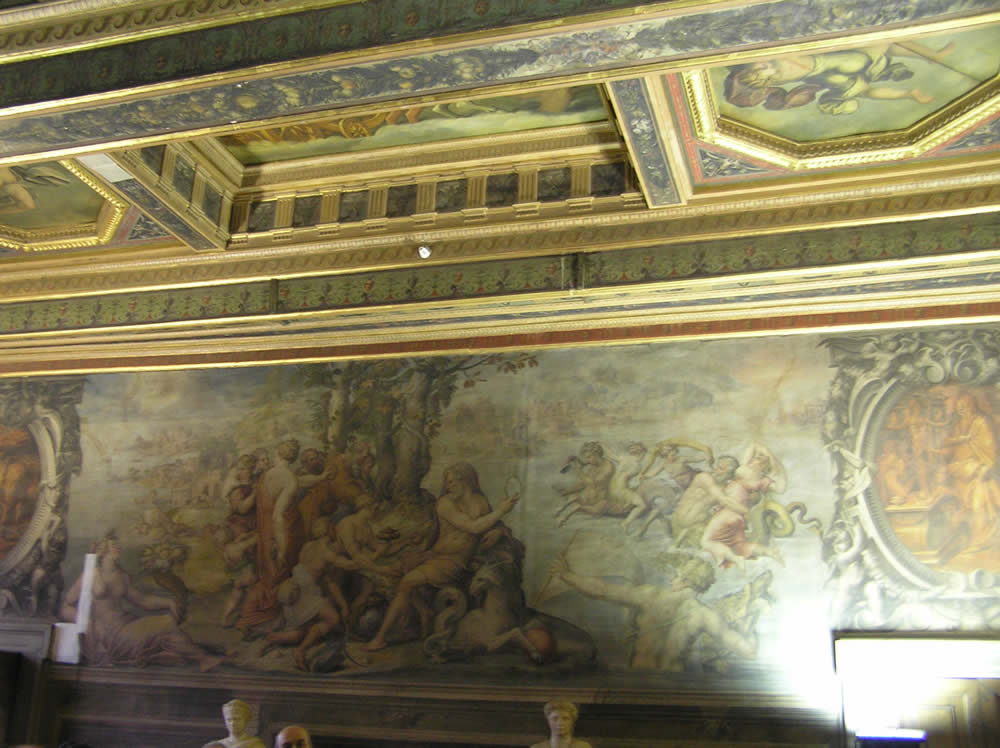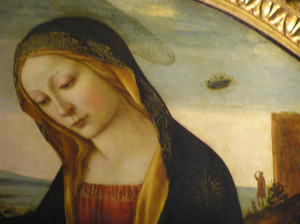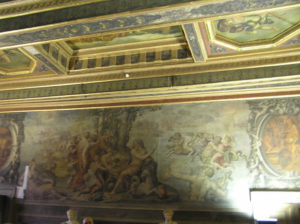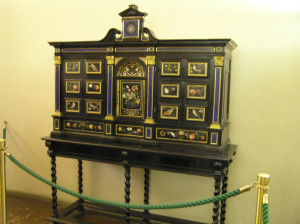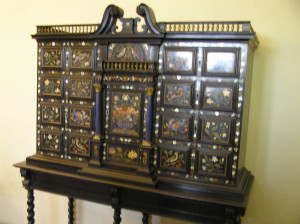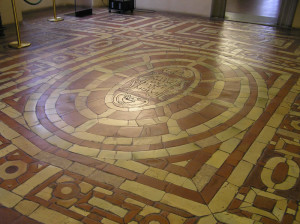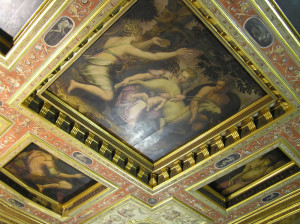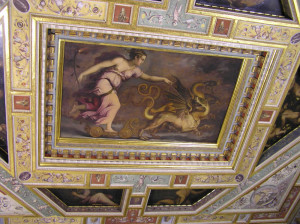Questo articolo è disponibile anche in:
![]() Italiano
Italiano
The visit of the second floor of the Palazzo Vecchio begins with the so-called Apartments of the Elements. These rooms were the private rooms of Cosimo I. In this section of the building are: the Hall of the Elements, the Hall of Opi, the Hall of Ceres with the Scrittoio di Calliope, the Hall of Jupiter, the Terrace of Juno, the Hall Hercules, the Scrittoio di Minerva and the Terrace of Saturn. All the rooms in this part of the building are decorated with allegorical frescoes realized in part by Battista del Taso and later by Giorgio Vasari and his associates, including mainly Cristofano Gherardi said il Doceno and Marco da Faenza.
HALL OF ELEMENTS (SALA DEGLI ELEMENTI)
In the first room you visit, the Hall of Elements, which can be reached directly from the stairs coming from the first floor. In this room are found on the walls of the frescoes: the Allegory of the Earth with the first fruits of the Earth offers to Saturn, the Allegory of the Water with the Birth of Venus, and the Allegory of Fire with the Forge of Vulcan. On the ceiling of the hall is the fresco of the Allegory of the Air represented by Saturn that mutilates the sky. Between the two windows are the frescoes of Mercury and Pluto. In this room there is also a marble fireplace by Bartolomeo Ammannati.
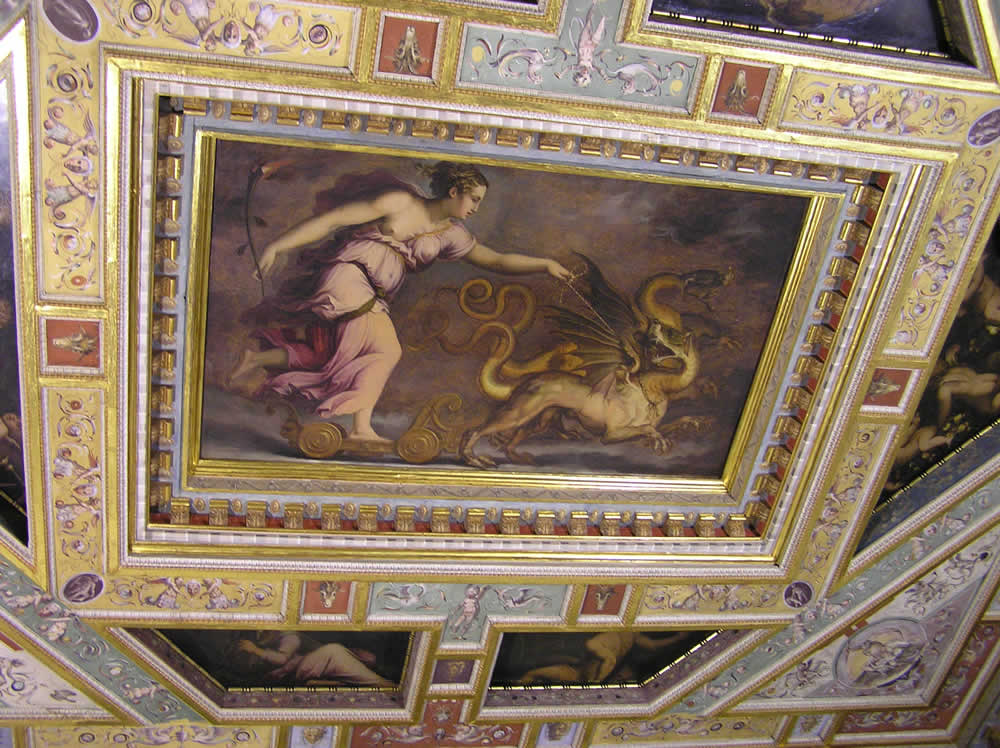
HALL OF HOPI AND CERES (SALE DI OPI E DI CERERE)
The second room that is visited is the Hall of Opi, the floor of the rooms is original and in the center is the inscription COSM. MEDIC-DUX-FLORE-II-MDLVI, dated 1556, stands on the ceiling a fresco of the Triumph of the goddess Opi. The third room is the room of Ceres with the beautiful ceiling fresco of Ceres seeking her daughter Persephone kidnapped by Pluto. Next to this room there is the Scrittoio di Calliope.
HALL OF JUPITER AND THE TERRACE OF JUNO (SALA DI GIOVE E IL TERRAZZO DI GIUNONE)
From here you come back across again the halls of Ceres and Opi and you reach the Hall of Jupiter. This room is dedicated to Jupiter father of gods and the son of Saturn and Opi. On the ceiling of the hall is a beautiful representation of Jupiter raised by nymphs and suckled by the goat Amalthea. Here is also a ebony stipo of the seventeenth century inlaid with semiprecious stones. Next to the Hall of Jupiter is the Terrace of Juno, originally formed by a columned loggia now enclosed by a wall. On the ceiling is the representation of Juno in a chariot pulled by peacocks, among the allegories of Abundance and Podestà. In this room is the famous Putto with Dolphin by Andrea del Verrocchio, a work carried out around 1480.
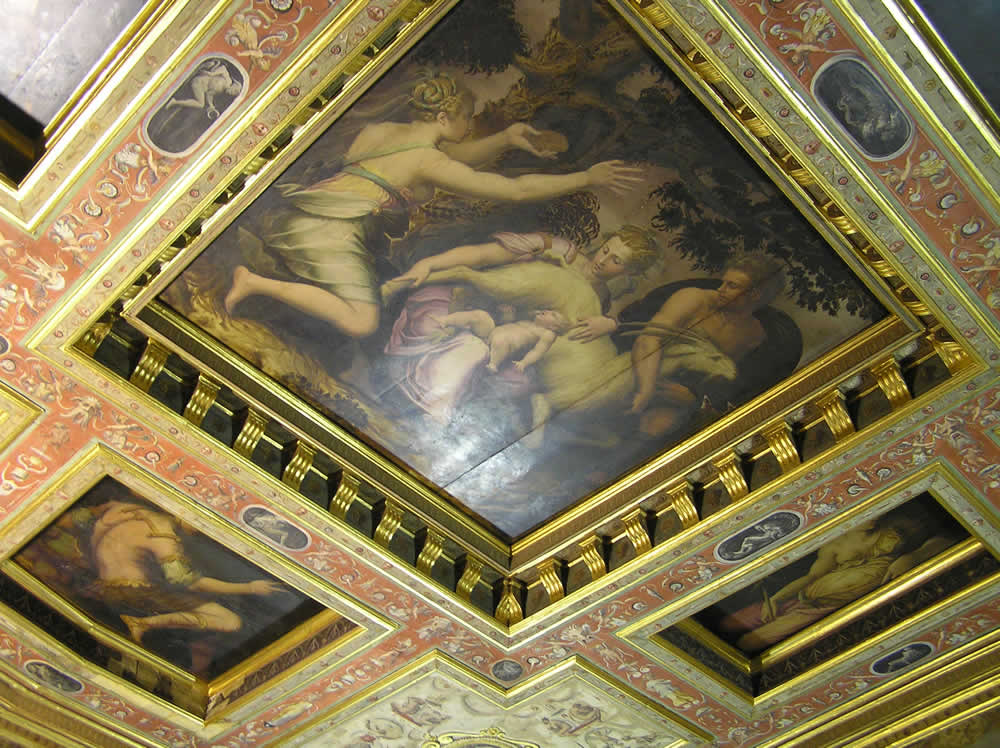
HALL OF HERCULES (SALA DI ERCOLE)
The tour leads to the Hall of Hercules which houses a beautiful ebony stipo of the seventeenth century – inlaid with precious stones – and with the ceiling shows the painting in oil on panel of Hercules strangling the snakes sent by Juno in her crib. In this room is also exposed the painting of the Madonna and Child and St. John of uncertain attribution, probably the work of the so-called “Master of Tondo Miller” or by Sebastiano Mainardi or Jacopo del Sellaio. This painting is famous for the presence of a strange object that looks like a flying saucer to the right of the Madonna.
TERRACE OF SATURN (SCRITTOIO DI MINERVA E IL TERRAZZO DI SATURNO)
The visit to the Apartments of the Elements ends with the Scrittoio di Minerva and the Terrace of Saturn (Terrazzo di Saturno). The Terrace of Saturn is a porch that overlooks Florence with a ceiling painted by Giorgio Vasari and Giovanni Stradano. While the small Scrittoio di Minerva housed the marble statues of the small size of the collection of Cosimo I. The latter two rooms during the winter season are closed to visitors.
The visit of the second floor of the Palazzo Vecchio continues through the halls of the Apartments of Eleonora of Toledo.
Questo articolo è disponibile anche in:
![]() Italiano
Italiano

